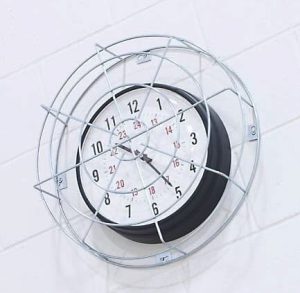 In conversations, I’ve begun to suspect that one of the biggest, if not the biggest, problem facing designers wishing to do truly good, deep, design, is client expectations. That is, a belief that if we’re provided with the appropriate information, we can crank out a solution. Why, don’t you just distribute the information across the screen and add a quiz? While there are myriad problems, such as lack of knowledge of how learning works, etc, folks seem to think you can turn around a course in two weeks. Thus, I’m led to ponder if time is the biggest problem.
In conversations, I’ve begun to suspect that one of the biggest, if not the biggest, problem facing designers wishing to do truly good, deep, design, is client expectations. That is, a belief that if we’re provided with the appropriate information, we can crank out a solution. Why, don’t you just distribute the information across the screen and add a quiz? While there are myriad problems, such as lack of knowledge of how learning works, etc, folks seem to think you can turn around a course in two weeks. Thus, I’m led to ponder if time is the biggest problem.
In the early days of educational technology, it was considered technically difficult. Thus, teams worked on instantiations: instructional designers, media experts, technologists. Moreover, they tested, refined, and retested. Over time, the tools got better. You still had teams, but things could go faster. You could create a draft solution pretty quickly, with rapid tools. However, when people saw the solutions, they were satisfied. It looks like content and quizzes, which is what school is, and that’s learning, right? Without understanding the nuances, it’s hard to tell well-produced learning from well-designed and well-produced learning. Iteration and testing fell away.
Now, folks believe that with a rapid tool and content, you can churn out learning by turning the handle. Put content into the hopper, and out comes courses. This was desirable from a cost-efficiency standpoint. This gets worse when we fail to measure impact. If we’re just asking people whether they like it, we don’t really know if it’s working. There’s no basis to iterate! (BTW, the correlation for learner assessment of learning quality, and the actual quality, is essentially zero.)
For the record, an information dump and knowledge test is highly unlikely to lead to any significant change in behavior (which is what learning we are trying to accomplish). We need is meaningful practice, and to get that right requires a first draft, and fine tuning. We know this, and yet we struggle to find time and resources to do it, because of expectations.
These expectations of speed, and unrealistic beliefs in quality, create a barrier to actually achieving meaningful outcomes. If folks aren’t willing to pay for the time and effort to do it right, and they’re not looking at outcomes, they will continue to believe that what they’re spending isn’t a waste.
I’ve argued before that what might make the biggest impact is measurement. That is, we should be looking to address some measurable problem in the org and not stop until we have addressed it. With that, it becomes easier to show that the quick solutions aren’t having the needed impact. We need evidence to support making the change, but I reckon we also need to raise awareness. If we want to change perception, and the situation, we need to ensure that others know time is the biggest problem. Do you agree?
Learning facilitation is in my opinion a service. One of the differences between a service and a product (I learned long ago) is that a product you can test (= experience) before you buy/consume it. A service you can’t. And as a consumer of a service, you are also a part of the service. That is why, I believe, the client expectations are so important in learning design.
I also strongly believe that learning is personal. Therefore, it’s not the expectations of an intermediary, like a H&R person, which are important, but the expectations of each and every learner. Until recently, understanding and managing the expectations of each learner was hard to scale, especially as everything has to go faster and faster and be cheaper and cheaper.
So yes, I do agree with you!